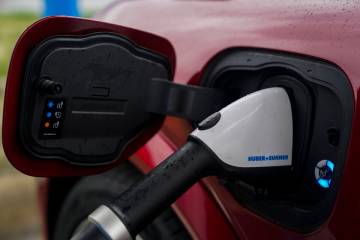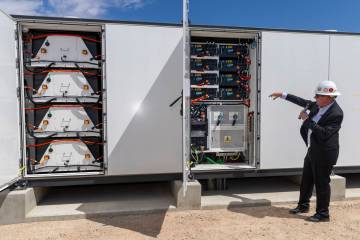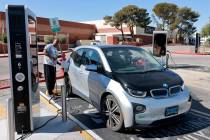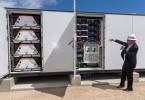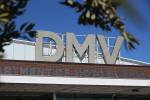School district turning to solar
Solar power used to be thought of in the same way as organic produce: healthy but pricey.
Costs, however, have dropped because the recession has depressed demand while there is a growing supply of photovoltaic panels, which convert solar radiation into electricity.
As a result, the startup costs associated with solar power are now so affordable that even the cash-strapped Clark County School District is going on a summer spending spree.
The district plans to invest $4 million in rooftop solar panels for as many as 20 schools. The photovoltaic systems could provide about 25 percent of the schools' power and save the district $190,000 a year for the next 20 years, based on current energy prices, said Paul Gerner, associate superintendent of facilities.
Officials are not counting on energy savings to pay for the investment in startup costs, but they do expect a return on the investment in solar energy because of NV Energy's rebate program and other government incentives.
"It makes it a pretty attractive proposition," Gerner said.
The school district has to pay for the startup costs, but it will receive $1.44 million in federal stimulus funding once the first five schools are outfitted as solar farms.
In addition, the district will receive $1.2 million for the same five schools in the form of one-time rebate checks from NV Energy, the local utility.
The district will receive additional rebate checks as more schools are completed. The goal is to finish the project by November.
The school district could get as much as $5 million in rebate checks if all 20 schools hook up the solar power systems, which would be more than enough to cover the initial investment and any financing and design costs.
NV Energy has approved the school projects but has stopped taking new applications for the rebate program, a spokeswoman for NV Energy said.
The one-time rebate pays $5 for the installation of one photovoltaic watt of power. So the district would get a $250,000 rebate check for the installation of a 50,000 photovoltaic watt-system at a school.
That is considered a bargain because one photovoltaic watt is selling for $5 to $5.50. They formerly sold for as much as $9 to $10 per watt. In Southern Nevada, one watt of photovoltaic power generates an estimated 2,000 hours of power per year, based on the amount of local sunshine.
The district currently pays 11 cents per kilowatt hour to NV Energy. The district spends about $65 million on electricity a year.
"So we know any (solar) watt will generate $4.40 worth of energy at today's price," Gerner said. If the cost of energy rises, the watts will only gain in value.
The two main contractors, Helix Electric and Bombard Renewable Energy, a division of Bombard Electricity, said the solar projects will save or create jobs for electricians, many of whom will receive specialized training for installing photovoltaic paneling.
"It will bring people who had been laid off back to work," said Earl Ward, the district manager of Helix Electric.
The electricians will be paid above the prevailing wages, roughly $50 an hour, Ward said, and installing photovoltaic paneling "is a fantastic skill to have on the resume," Ward said.
Chris Brooks, director of Bombard Renewable Energy, said the solar projects will "keep 50 people from being laid off."
Vegas PBS, which recently dedicated its new $60 million building at McLeod Drive and Flamingo Road , used rebates, grants and donations to pay for a 715-kilowatt system of photovoltaic panels. The energy-efficient facility also has insulation and geothermal wells.
"Compared to our old building, which was built in 1974, we are using one-fourth of the energy per square foot," said Tom Axtell, general manager of Vegas PBS.
"It's a stunning savings. From an operations standpoint, it really allows us to use donated money or grant money ... to deliver services and not pay for an electric bill," Axtell said. "So we are really bullish on the system we put in."
When the solar panels are generating excess energy, the power flows back into the city's main power grid at a savings for Vegas PBS, Axtell said.
Vegas PBS is a self-funded service that is sponsored by the district. Its new facility is home to the district's Virtual High School, which offers online high school courses.
Axtell looks at school rooftops as an energy asset, much like a river or a ray of sunshine. Because many district schools share the same design, there would be economies of scale in planting solar farms on school rooftops across the Las Vegas Valley.
"You have a single property owner that has large expanses of flat roofs, that all have the same exact designs because you have cookie-cutter schools. It really allows for the efficiency in the planning and the installation of solar farms," Axtell said.
"You do it for one high school, there's probably 10 others that have the same footprint. So you don't have the same expense of engineering."
Contact reporter James Haug at jhaug@reviewjournal.com or 702-374-7917.
SCHOOLS SELECTED
The fifteen schools below have been identified for solar power installations. The district plans to identify five more schools.
Sister Robert Joseph Bailey Elementary School, 4255 Jimmy Durante Blvd., Las Vegas
Dickens Elementary School, 5550 Milan Peak St., North Las Vegas
Givens Elementary School, 655 Park Vista Drive, Las Vegas
Roundy Elementary School, 2755 Mohawk St., Las Vegas
Smalley Elementary School, 304 E. Paradise Hills Drive, Henderson
Batterman Elementary School, 10135 W. Quail Drive, Las Vegas
Carl Elementary School, 5625 Corbett St., Las Vegas
Conners Elementary School, 3810 Shadow Peak Drive, Las Vegas
Forbuss Elementary School, 8601 S. Grand Canyon Drive, Las Vegas
Hummel Elementary School, 9800 Placid St., Las Vegas
Goolsby Elementary School, 11175 W. Desert Inn Road, Las Vegas
Ries Elementary School, 9805 S. Lindell Road, Las Vegas
Scherkenbach Elementary School, 9371 Iron Mountain Road, Las Vegas
Thompson Elementary School, 7351 N. Campbell Road, Las Vegas
Northwest Career and Technical Academy School, 8200 W. Tropical Parkway, Las Vegas





